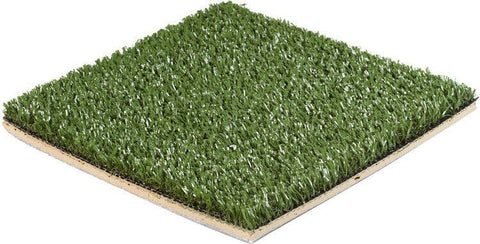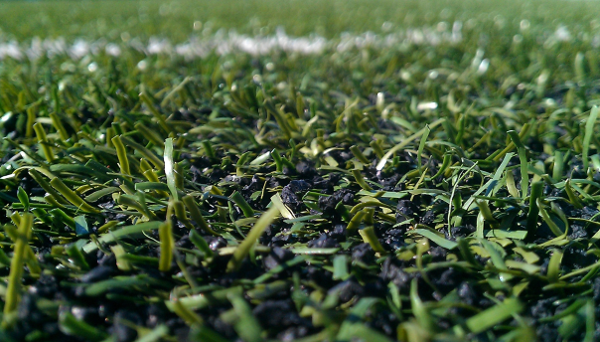Eco-Friendly Arizona Artificial Turf for a Year-Round Lush Green Lawn
Eco-Friendly Arizona Artificial Turf for a Year-Round Lush Green Lawn
Blog Article
Look Into the Environmental Conveniences of Opting for Artificial Turf Solutions
The fostering of synthetic grass options provides an engaging opportunity to resolve pushing environmental difficulties. By considerably reducing water usage and reducing the application of dangerous chemicals, these options not just advertise lasting landscape design but also secure local ecological communities. Furthermore, the reduced carbon impact connected with decreased maintenance activities adds to an extra sustainable technique to land administration. The effects of these benefits extend past simple conservation initiatives, increasing inquiries concerning their long-term effect on environment conservation and total environmental equilibrium. Exploring these dimensions exposes a complex interplay worth taking into consideration.
Water Preservation Conveniences
One of the most considerable benefits of man-made turf is its capacity to preserve water. In contrast, fabricated lawn does not require watering, significantly reducing the overall demand for water sources.
By getting rid of the demand for normal watering, synthetic grass adds to lasting landscape techniques and assists reduce the environmental impact of extreme water intake. The conservation of water prolongs to the decrease of runoff, which can lead to dirt erosion and river pollution.
Furthermore, the installation of synthetic turf allows municipalities and homeowners to designate water sources extra efficiently, concentrating on necessary uses such as drinking water and agriculture. The change towards synthetic grass not only advertises accountable water usage yet likewise straightens with wider environmental goals focused on maintaining natural sources.
As communities progressively focus on sustainability, the water preservation benefits of synthetic grass present an engaging instance for its fostering in property and business landscaping tasks.
Decreased Chemical Use
The transition to synthetic grass dramatically reduces the dependence on chemical treatments frequently made use of in natural lawn upkeep. Standard lawn administration typically includes the application of plant foods, pesticides, and herbicides to promote growth and control insects. These chemicals can pose dangers to human health and wellness, local wild animals, and the environment, adding to soil and water contamination.
In contrast, artificial lawn eliminates the need for these harmful substances. By reducing the release of artificial substances right into the ecological community, fabricated lawn promotes much healthier dirt and water systems.
Furthermore, the absence of chemical overflow connected with synthetic grass installments helps secure regional waterways from pollution, sustaining aquatic life and preserving biodiversity. Arizona turf. As areas increasingly focus on sustainable methods, going with fabricated turf provides a viable option that straightens with ecological preservation objectives. Via this shift, property proprietors can take pleasure in lush green areas without endangering ecological wellness, leading the way for an extra lasting future
Lower Carbon Footprint

Furthermore, the installation of synthetic grass can result in significant water preservation. All-natural grass require considerable amounts of water for watering, which not just includes in the carbon impact connected with water removal and therapy but additionally pressures local water sources. In comparison, artificial turf requires minimal maintenance, needing no watering, thus significantly decreasing water usage and its connected power prices.
In addition, the long life of fabricated lawn contributes to its decreased carbon influence. With a life expectancy of approximately 15 years or even more, the requirement for constant substitutes is reduced, resulting in less waste and reduced energy usage in production and taking care of standard grass choices. Generally, synthetic turf offers a lasting choice for eco aware landscape design.
Habitat Conservation
Habitat conservation is a critical factor to consider in the debate over landscaping options, particularly when contrasting man-made lawn to all-natural turf. Natural yard lawns usually require comprehensive maintenance, including making use of plant foods, herbicides, and pesticides, which can adversely affect neighborhood ecological communities. These chemicals can seep right into the dirt and waterways, harming native vegetation and fauna and interfering with regional environments.
Man-made turf eliminates the demand for damaging chemicals, thus securing nearby wildlife and maintaining the stability of surrounding communities. The setup of man-made turf can lead helpful resources to the conversion of previous lawn locations into more biodiverse landscapes, such as pollinator gardens or indigenous plant areas, which can sustain neighborhood wildlife.
Eventually, the transition to synthetic grass not just conserves water and reduces maintenance initiatives yet also fosters a much more unified partnership in between human activities and the natural atmosphere, promoting habitat conservation in the procedure.
Long-Term Sustainability
Lasting sustainability is an essential consider reviewing the advantages of man-made turf over typical lawn lawns. One of the most significant advantages of artificial grass is its sturdiness; it can last approximately 15-20 years with marginal upkeep, whereas natural yard calls for regular reseeding and replacement. This durability decreases the demand for constant resources, such as water, fertilizers, and pesticides, which are necessary for preserving a healthy and balanced grass lawn.
In addition, synthetic grass contributes to a decrease in carbon emissions connected with grass care devices. Traditional lawns commonly need gas-powered lawn mowers, trimmers, and blowers, all of which add to air contamination. Phoenix turf companies. In contrast, synthetic grass removes check it out the demand for such equipment, promoting a cleaner environment
In addition, the production of artificial turf increasingly makes use of recycled products, boosting its sustainability account. As makers adopt green techniques, the ecological impact of synthetic grass continues to decrease.

Final Thought
The fostering of synthetic grass solutions provides considerable environmental benefits, including significant water preservation, decreased dependence on dangerous chemicals, and a reduced carbon impact. Artificial turf help in maintaining all-natural habitats by decreasing land disturbance and promoting long-lasting sustainability through the usage of durable materials. Collectively, these variables highlight the potential of synthetic grass to contribute favorably to ecological health and wellness and provide a feasible alternative to conventional landscaping techniques in an increasingly resource-conscious world.
In contrast, artificial turf does not need watering, considerably reducing the total need for water resources. By lessening the release of synthetic compounds into the ecosystem, artificial turf advertises much healthier dirt and water systems.
In addition, the installment of man-made turf can result in significant water preservation. In contrast, synthetic grass requires minimal upkeep, needing this content no watering, consequently dramatically decreasing water use and its associated energy costs.

Report this page